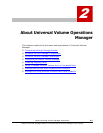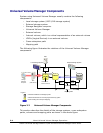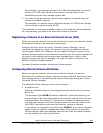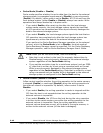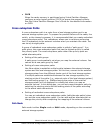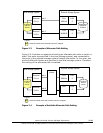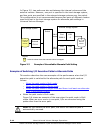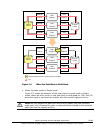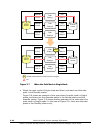
About Universal Volume Manager Operations 2-9
Hitachi Universal Storage Platform V/VM Universal Volume Manager User’s Guide
For example, if an external volume of 100 GB was mapped as an internal
volume of 70 GB, then 30 GB of the external volume would not be
accessible from the local storage system side.
• You cannot map an external volume whose capacity is smaller than the
minimum available capacity.
For example, you cannot map an external volume of 10 GB as an internal
volume which requires at least 30 GB.
The maximum or minimum available capacity of an external volume depends
on the emulation type that is set when the volume is mapped.
Registering a Volume to an External Volume Group (ExG)
When you map an external volume as an internal volume, you need to register
the external volume to an external volume group.
External volumes, which are set by Universal Volume Manager, can be
classified into groups by usage. Any group of this type is called an external
volume group (ExG). For instance, you can register multiple volumes in one
external storage system to one external volume group. Or you can register the
volumes in one external volume group and manage them in block, even
though the data you want to manage in a lump is stored in volumes in the
different external storage systems.
You need to assign numbers to external volume groups.
Configuring External Volume Attributes
When you map an external volume as an internal volume, you set the
attributes of the external volume. External volume attributes can be set using
the mapping policy or the Set External Volume Parameter dialog box of the
Universal Volume Manager.
The attributes of the external volume are as follows:
• Emulation type
Select an emulation type for the mapped external volume from the drop-
down list.
The emulation type OPEN-V must be selected if, after the mapping, you
are planning to use the existing data in the external volume from the local
storage system. For example, if you want to migrate the existing data in
the external volume to the local storage system volume, you have to set
the OPEN-V emulation type when the external volume is mapped.
If you select the emulation type other than OPEN-V, the volume requires a
specific area provided for management data. Once this area is provided,
volume capacity after the mapping becomes less than the actual external
volume capacity for the area (volume).



